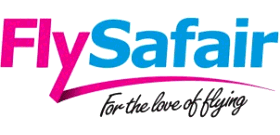 FlySafair Strike Resolution Signals Aviation Sector Stability for African Market
FlySafair Strike Resolution Signals Aviation Sector Stability for African Market
South Africa's dominant domestic carrier FlySafair has successfully concluded a two-week pilot strike that temporarily disrupted operations across the country's busiest air corridors. The industrial action, which ran from July 21 to August 1, 2025, ended with a comprehensive agreement between the airline and trade union Solidarity, marking a pivotal moment for the nation's aviation recovery trajectory.
The resolution demonstrates the effectiveness of South Africa's labor mediation framework, with the Commission for Conciliation, Mediation and Arbitration (CCMA) playing a crucial facilitating role throughout the negotiation process. This outcome reinforces confidence in the country's ability to manage industrial disputes while maintaining operational continuity—a critical factor for African travel professionals planning itineraries and partnerships.
FlySafair's commanding 60% market share of South Africa's domestic aviation sector meant the strike's impact extended far beyond a single carrier's operations. The airline, which processes approximately 130,000 passengers daily across its network of nine domestic destinations, experienced significant disruptions on key routes connecting Cape Town, Johannesburg, and Durban—the so-called Golden Triangle that forms the backbone of South African air travel.
The most severely affected routes included the Cape Town-Johannesburg corridor, with multiple daily flights cancelled including services FA112, FA104, FA110, and FA293. Similarly, the Johannesburg-Durban route saw cancellations of flights FA262, FA418, and FA540, while connections between Cape Town and Lanseria Airport also faced substantial disruptions. These routes represent some of the continent's busiest domestic air corridors, underlining the strike's broader implications for regional connectivity.
Despite the operational challenges, FlySafair's management emphasized their commitment to minimizing passenger inconvenience through careful disruption management. The airline's approach reflects lessons learned from similar recent labor disputes across Africa, where carriers have increasingly focused on maintaining customer relations during industrial action periods.
The timing of this resolution proves particularly significant given South Africa's aviation sector's robust post-pandemic recovery. Recent data indicates the country has achieved 91% recovery in passenger traffic compared to pre-pandemic levels, with domestic travel showing a 3% year-on-year growth rate. This momentum positions South Africa as a leader in Africa's aviation recovery, with passenger throughput reaching 87% of 2019 levels by February 2025.
FlySafair's operational excellence record—including a 93.82% on-time performance in 2024—earned recognition as the most punctual airline in the Middle East and Africa region for eleven consecutive months. This achievement, coupled with its status as Africa's best low-cost carrier according to the 2025 Skytrax World Airline Awards, underscores the strategic importance of maintaining stable labor relations.
The strike resolution comes amid broader positive developments in South African aviation. The sector contributes significantly to the country's tourism industry, which accounts for 8.8% of GDP, while recent policy reforms including a 144-hour visa-free scheme are expected to boost international arrivals further. The upcoming G20 Summit in 2025 presents additional opportunities for enhanced global tourism profile.
Regional context reveals that South Africa's experience mirrors broader trends across African aviation. Recent labor disputes at South African Airways in December 2024 were resolved through direct negotiation resulting in a 9.47% pay increase, while Kenya's aviation workers' strike at Jomo Kenyatta International Airport was settled through return-to-work agreements and review periods. These patterns suggest African aviation stakeholders are developing more sophisticated approaches to labor relations management.
FlySafair's extensive route network, spanning from domestic connections to regional destinations including Harare, Victoria Falls, Livingstone, Mauritius, and Windhoek, positions the carrier as a critical component of southern African connectivity. The airline's recent expansion includes new routes such as Cape Town to Kruger Mpumalanga launched in April 2024, with Cape Town-Hoedspruit scheduled for October 2025.
The successful resolution also highlights the maturation of South Africa's aviation labor relations framework. Both FlySafair and Solidarity acknowledged the agreement as a significant step toward improved employer-employee relations, setting a precedent for future dispute resolution across the sector. This development proves particularly relevant as African aviation continues expanding, with passenger throughput projected to reach 71 million by 2042.
For African travel industry professionals, FlySafair's swift return to normal operations reinforces South Africa's position as a reliable hub for continental and international connections. The airline's fleet of 34 Boeing 737 aircraft continues serving the region's most comprehensive domestic network, while its focus on consolidation rather than rapid expansion suggests sustainable growth strategies.
The resolution timing proves fortuitous as South Africa's aviation sector addresses ongoing challenges including fuel supply vulnerability, infrastructure modernization needs, and regulatory efficiency improvements. However, the country's 91% effective implementation of safety oversight systems according to the latest ICAO audit maintains its ranking among Africa's top performers.
As FlySafair resumes full operations with updated schedules and renewed focus on passenger satisfaction, the successful strike resolution sends positive signals throughout Africa's travel industry. The outcome demonstrates that even significant labor disputes can be resolved through effective mediation while maintaining the operational stability essential for the continent's continued aviation growth and tourism development aspirations.
